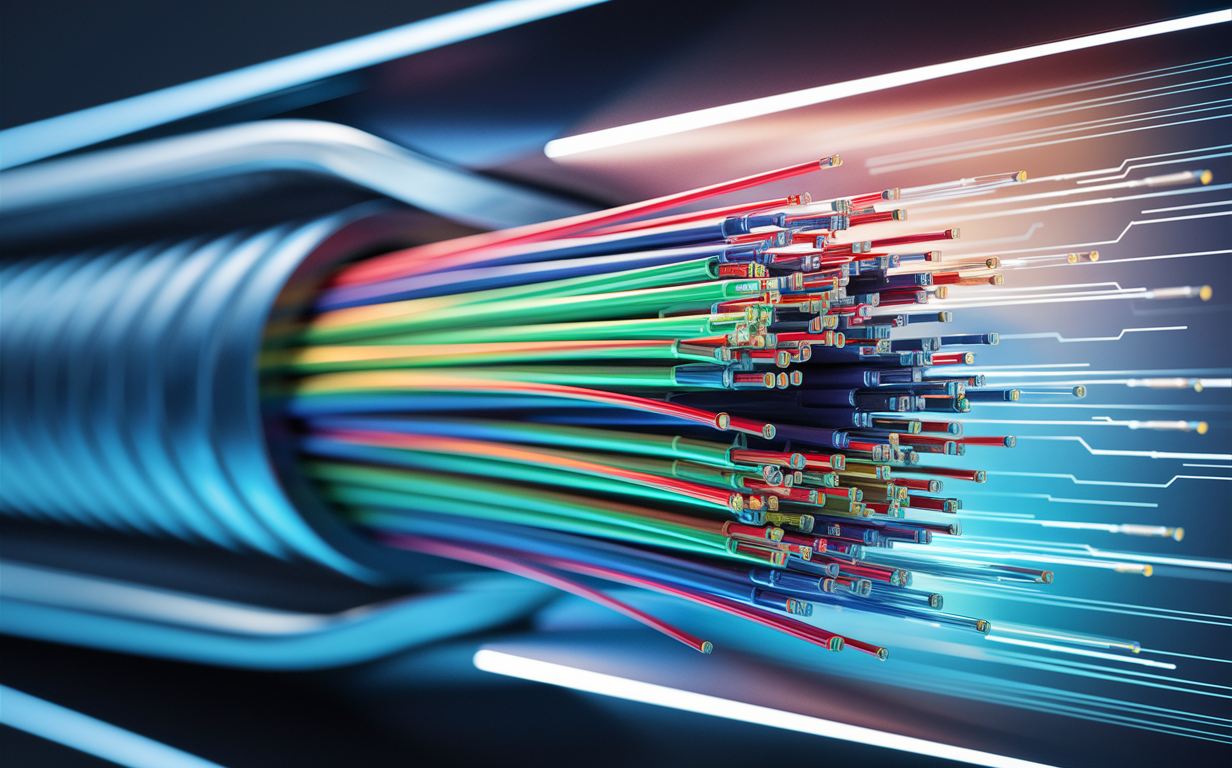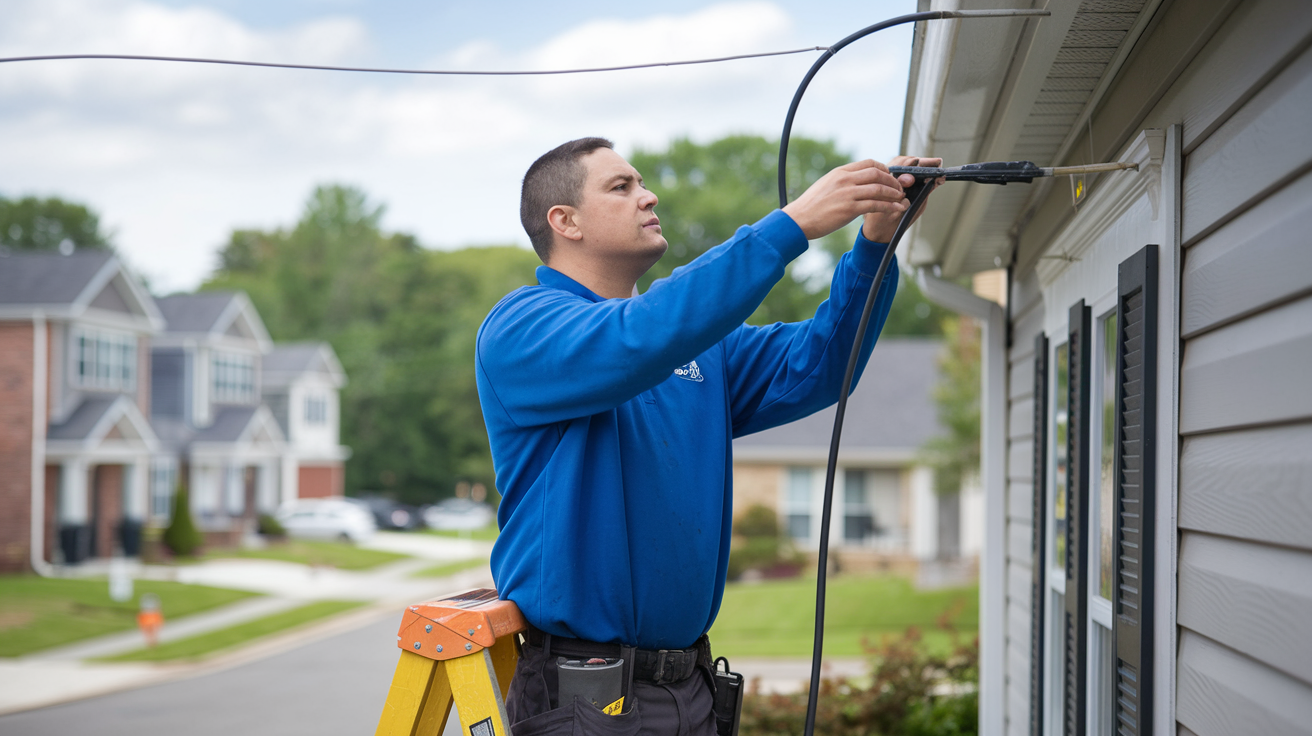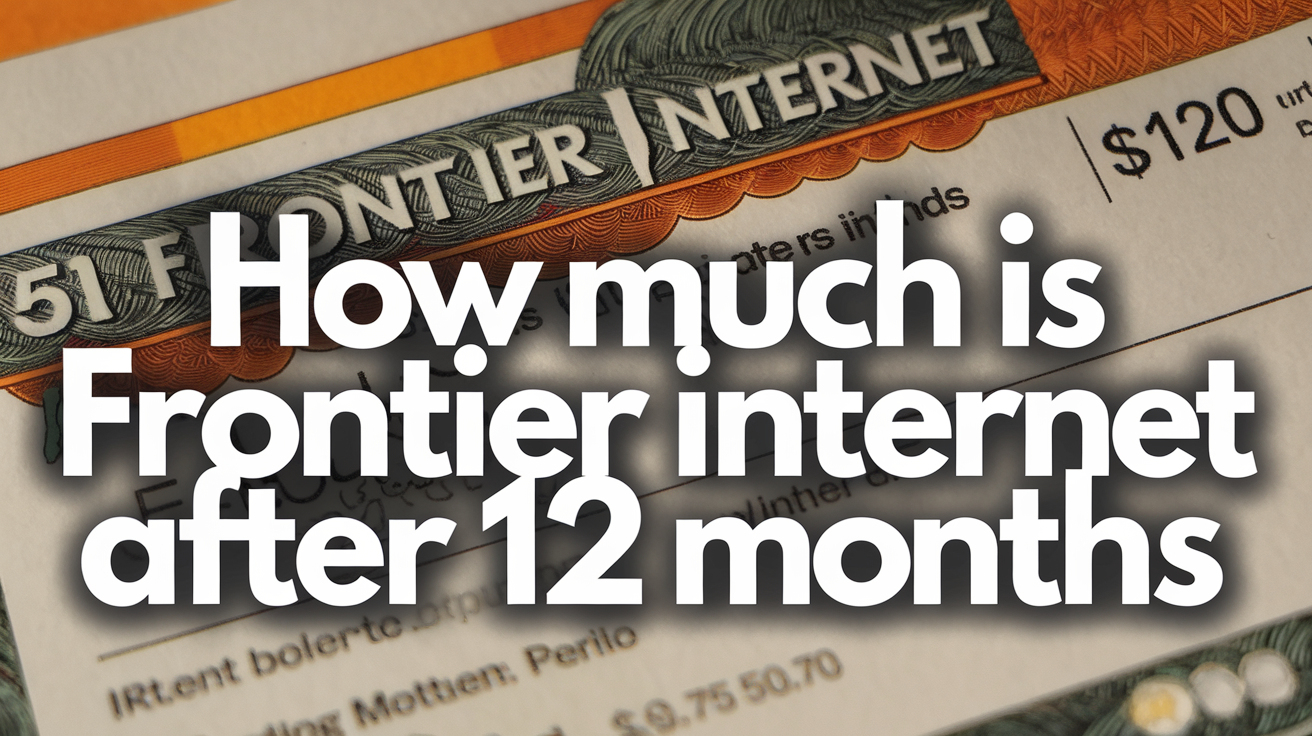The Evolution of Frontier Internet Equipment: What’s New in 2025

The internet has come a long way since the days of dial-up modems and sluggish DSL connections. As we step into 2025, Frontier Communications, one of the leading internet service providers in the United States, continues to push the boundaries of connectivity with cutting-edge equipment and innovative technology. From humble beginnings to a fiber-optic powerhouse, Frontier’s journey reflects the broader evolution of internet infrastructure. This blog dives into how Frontier’s internet equipment has evolved over the years and highlights the exciting advancements we’re seeing in 2025, transforming how we connect, work, and play.
A Brief History of Frontier’s Internet Equipment
Frontier Communications began as a traditional telephone company, but over the decades, it pivoted to meet the growing demand for high-speed internet. In its early days, Frontier relied heavily on copper-based DSL (Digital Subscriber Line) technology, which used existing telephone lines to deliver internet access. While DSL was a leap forward from dial-up, it had limitations—speeds maxed out at around 100 Mbps in optimal conditions, and performance degraded over long distances.
The real game-changer came when Frontier embraced fiber-optic technology. By the mid-2010s, the company began rolling out its Frontier Fiber (formerly Frontier FiOS) service in select markets, offering symmetrical upload and download speeds that DSL could never match. Early fiber equipment included Optical Network Terminals (ONTs) installed at customers’ homes, paired with basic routers to distribute Wi-Fi signals. These setups delivered speeds up to 1 Gbps, a massive improvement at the time, but as consumer needs evolved, so did Frontier’s equipment.
By 2020, Frontier was expanding its fiber footprint, aiming to reach millions of homes with faster, more reliable internet. The company introduced more advanced ONTs and began bundling Amazon’s Eero routers with its plans, enhancing Wi-Fi coverage and smart home compatibility. This marked a shift from merely providing raw speed to ensuring a seamless, whole-home internet experience. Now, in 2025, Frontier is taking its equipment to the next level, aligning with broader industry trends like Wi-Fi 7, multi-gigabit speeds, and IoT integration.
What’s Driving the Evolution in 2025?
Before diving into the specifics of Frontier’s 2025 equipment, it’s worth understanding the forces shaping these advancements. The rise of remote work, 8K streaming, cloud gaming, and smart home ecosystems has skyrocketed bandwidth demands. According to industry projections, the average household in 2025 uses over 500 GB of data monthly—double what it was five years ago. Meanwhile, the proliferation of Internet of Things (IoT) devices, from smart thermostats to AI-powered security cameras, requires low-latency, high-capacity networks.
Frontier’s response? A combination of faster fiber infrastructure and smarter, more versatile equipment. The company’s ambitious goal to reach 10 million fiber locations by the end of 2025 (a target set years ago and now within sight) has paved the way for next-generation hardware that can handle these modern demands. Let’s explore what’s new in Frontier’s equipment lineup this year.
The Cutting-Edge Equipment of 2025- Next-Gen Optical Network Terminals (ONTs)
The ONT is the unsung hero of fiber internet, converting light signals from fiber-optic cables into electrical signals your devices can use. In 2025, Frontier has upgraded its ONTs to support multi-gigabit speed, up to 7 Gbps on its top-tier plans. These new units are more compact and energy-efficient, with built-in diagnostics that allow technicians to troubleshoot issues remotely, reducing downtime for customers. Some models even feature integrated Wi-Fi capabilities, blurring the line between ONTs and traditional routers for smaller homes or apartments. - Wi-Fi 7 Routers: The Eero Max 7 and Beyond
Wi-Fi technology took a massive leap forward with the adoption of Wi-Fi 7 in 2024, and Frontier is among the first ISPs to roll it out at scale in 2025. The company now includes the Amazon Eero Max 7 router with its Fiber 5 Gig and 7 Gig plans. This router supports tri-band connectivity (2.4 GHz, 5 GHz, and 6 GHz), delivering speeds up to 9.4 Gbps wirelessly—more than enough to saturate Frontier’s fastest plans. With features like multi-user MIMO and beamforming, it ensures every device in your home gets a strong, stable signal, even in crowded environments. Plusit'sts Zigbee smart home hub integration makes it a central hub for IoT devices, a nod to the growing smart home trend. - Mesh Wi-Fi Systems for Whole-Home Coverage
For larger homes, Frontier offers an upgraded Whole-Home Wi-Fi Plus package in 2025, featuring up to two Eero Max 7 mesh nodes for an additional $30 per month. This builds on the earlier Eero 6 Plus systems, extending coverage up to 7,500 square feet and supporting over 200 connected devices simultaneously. The mesh system uses AI-driven optimization to reduce dead zones and adapt to network traffic, ensuring lag-free gaming and streaming even in the farthest corners of your home. - XGS-PON Technology
Behind the scenes, Frontier has fully transitioned to XGS-PON (10-Gigabit Symmetric Passive Optical Network) infrastructure in 2025. This upgrade allows for symmetrical speeds up to 10 Gbps, a significant jump from the GPON systems of the past, which capped upload speeds at 1 Gbps. XGS-PON-compatible ONTs and routers are now standard in new installations, future-proofing Frontier’s network for the next decade of internet innovation. - Smart Network Management Tools
Frontier’s 2025 equipment isn’t just about hardware—it’s also about smarter software. The Frontier app now integrates with all new routers and ONTs, offering real-time bandwidth monitoring, device prioritization, and parental controls. A standout feature is the “CloudSight” system, a value-added service that uses AI to predict and resolve network congestion before it impacts your experience. This is especially useful for households with heavy users, like gamers or remote workers.
Compared to competitors like AT&T, Verizon, and Starlink, Frontier’s 2025 equipment holds its own. AT&T and Verizon offer similar multi-gigabit fiber plans with Wi-Fi 7 routers, but Frontier’s free equipment rental (no monthly fees for the base router) gives it a cost advantage. Starlink, meanwhile, is pushing gigabit speeds via satellite with its new dish design, but it can’t match fiber’s low latency or reliability ty—key for applications like VR gaming or telemedicine.
Frontier’s focus on symmetrical speeds also sets it apart. While cable providers like Xfinity still dominate in rural areas with hybrid fiber-coaxial networks, their upload speeds (often below 100 Mbps) pale in comparison to Frontier Fiber’s 5 Gbps or 7 Gbps uploads. This makes Frontier a top choice for content creators, remote professionals, and anyone uploading large files to the cloud.
The Customer Experience in 2025Frontier’s equipment upgrades aren’t just about specs—they’re designed to improve the user experience. Installation remains free with professional technicians handling the ONT and router setup, though self-install options are now available for some fiber plans. The lack of data caps and contracts (unless you opt for a signup bonus) continues to be a selling point, reflecting Frontier’s customer-first approach.
That said, there are caveats. If you cancel service, unreturned equipment can incur fees, up to $400 for high-end devices like the Eero Max 7. And while Frontier’s fiber network is expanding, availability remains limited to 28 states as of 2025, though Verizon’s pending acquisition (set to close in 2026) could broaden its reach.
Looking Ahead: The Future of Frontier Equipment
As we look beyond 2025, Frontier’s equipment evolution shows no signs of slowing. The company is already testing 25 Gbps speeds in select markets, hinting at even faster ONTs and routers on the horizon. Integration with 6G wireless technology and advanced IoT ecosystems could further blur the lines between home internet and smart living. With Verizon’s resources behind it post-acquisition, Frontier might also explore AI-driven hardware that adapts to individual usage patterns in real time.
Conclusion
The evolution of Frontier’s internet equipment—from copper DSL modems to Wi-Fi 7-powered fiber systems—mirrors the internet’s transformation into an essential utility. In 2025, Frontier is delivering some of the fastest, most reliable connectivity available, backed by equipment that’s both powerful and user-friendly. Whether you’re streaming 8K video, managing a smart home, or running a small business, Frontier’s latest gear ensures you’re ready for the digital demands of today and tomorrow. As the company continues to innovate, it’s clear that Frontier isn’t just keeping up with the times—it’s helping define the future of internet access.
Call (844) 340-6366 and Start Your Frontier Internet Service Now!




